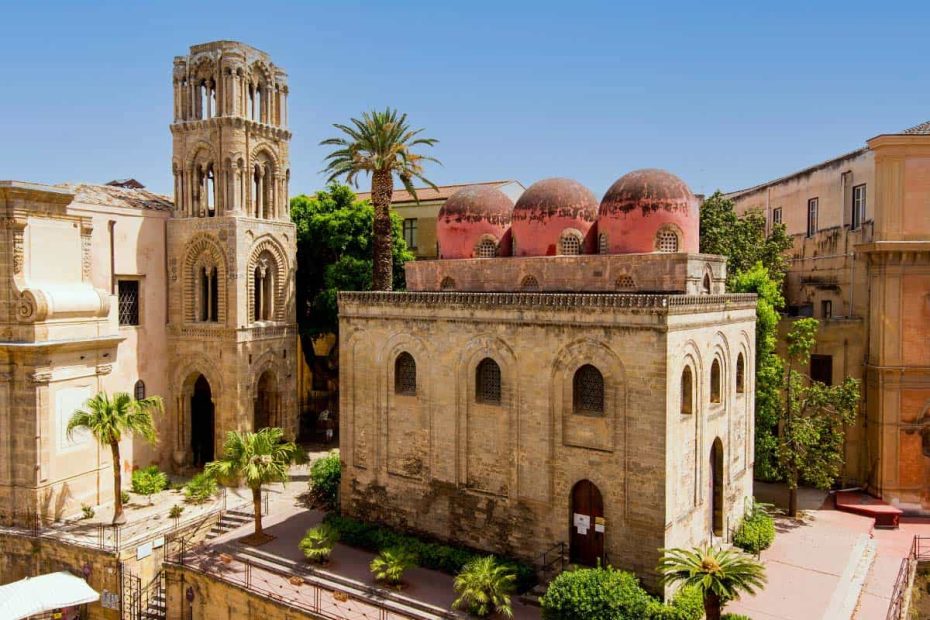The Church of San Cataldo is a splendid example of an architectural structure built by Islamic masters according to Western Romanesque principles. Its three pink domes make it one of Palermo’s most iconic sites. The Church of San Cataldo has been a UNESCO World Heritage Site since 2015 as part of the ‘Arab-Norman Palermo and the Cathedral Churches of Cefalù and Monreale‘ itinerary.
History of the Church of San Cataldo in Palermo
The Church of San Cataldo was built in 1554 for Majoni da Bari, who was one of the Norman King, William I’s greatest admirals. The church’s small size suggests that it was once a private chapel that formed part of a complex of buildings owned by the admiral, now no longer in existence, but which would have also included the Palazzo Majone. Following the death of Majone da Bari, the church was given in concession to Silvestro da Marsico, another of the King’s admirals. As evidenced by a plaque that can still be seen, Silvestro decided to bury his daughter Matilde in the Church of San Cataldo in 1161. In 1182, the chapel and adjoining buildings were ceded to the Benedictine monks of Monreale. They retained ownership until 1787, when the buildings were then converted into a post office. A restoration project, which took place between 1875 and 1882, restored the church to its original layout but also resulted in the destruction of the remaining Norman buildings. Since 1937, the church has been entrusted to the Equestrian Order of the Holy Sepulchre of Jerusalem and, since 2015, has been part of the UNESCO World Heritage List as part of the ‘Arab-Norman Palermo and the Cathedral Churches of Cefalù and Monreale‘ itinerary.
Architecture and artwork of the Church of San Cataldo
The Church of San Cataldo is a splendid example of an architectural structure built by Islamic masters according to Western Romanesque principles. Externally, the building’s cubic structure and three pink domes are a clear expression of the geometric style typical of Fatimite culture. The interior is divided into three naves by columns with capitals supporting their pointed arches. The floor has a splendid opus sectile pattern, which was an ancient technique for creating inlaid decorations using marble or other materials. The richness of the floor contrasts with the church’s completely bare walls. It is very likely, however, that these were also to have been covered with mosaics but, perhaps, the work was interrupted by the untimely death of Majone da Bari. In the central nave, there is a marble altar engraved with a Greek cross and the symbols of the four Evangelists.
Aggiungi ai preferiti












